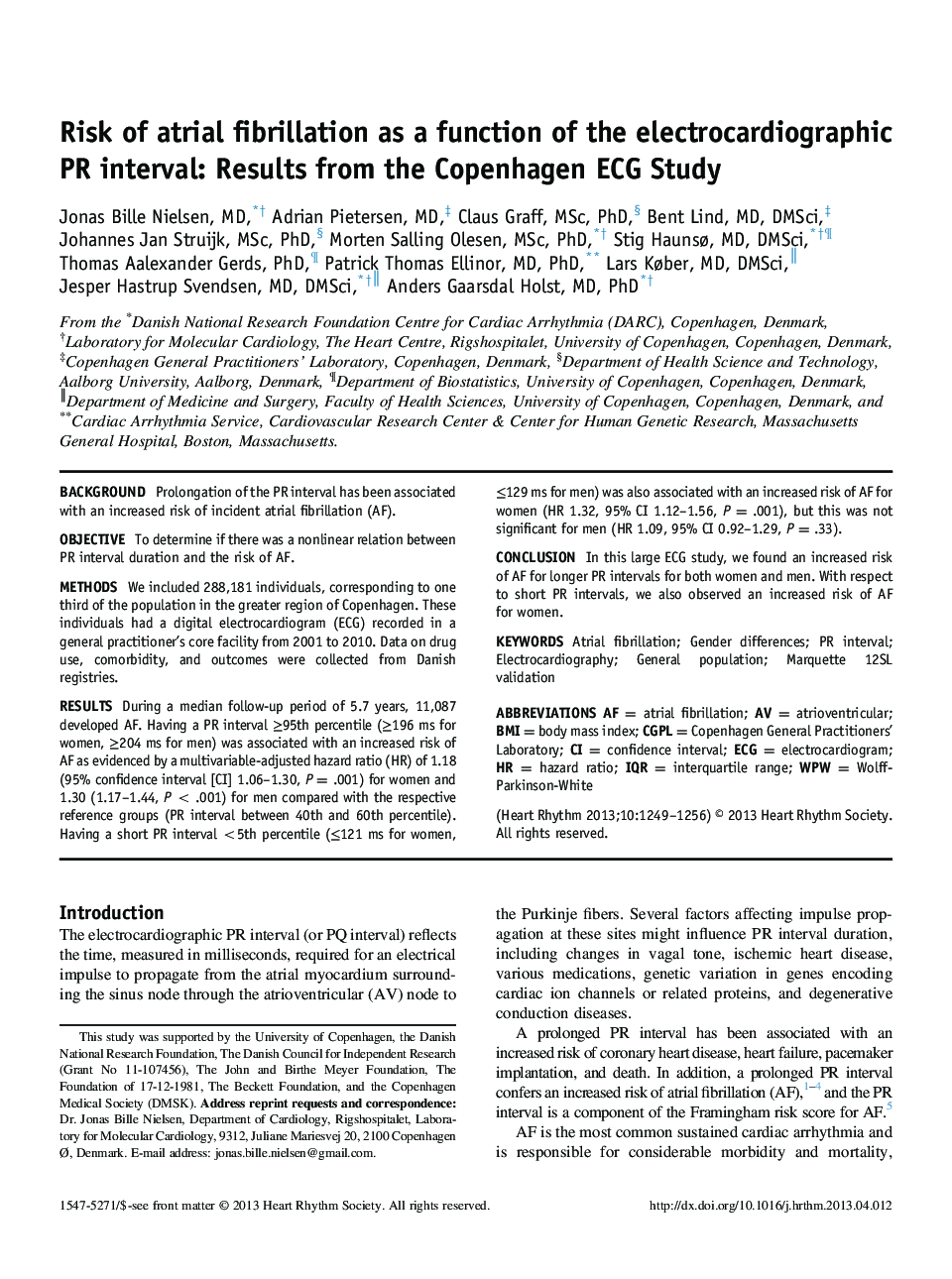| Article ID | Journal | Published Year | Pages | File Type |
|---|---|---|---|---|
| 2922174 | Heart Rhythm | 2013 | 8 Pages |
BackgroundProlongation of the PR interval has been associated with an increased risk of incident atrial fibrillation (AF).ObjectiveTo determine if there was a nonlinear relation between PR interval duration and the risk of AF.MethodsWe included 288,181 individuals, corresponding to one third of the population in the greater region of Copenhagen. These individuals had a digital electrocardiogram (ECG) recorded in a general practitioner’s core facility from 2001 to 2010. Data on drug use, comorbidity, and outcomes were collected from Danish registries.ResultsDuring a median follow-up period of 5.7 years, 11,087 developed AF. Having a PR interval ≥95th percentile (≥196 ms for women, ≥204 ms for men) was associated with an increased risk of AF as evidenced by a multivariable-adjusted hazard ratio (HR) of 1.18 (95% confidence interval [CI] 1.06–1.30, P = .001) for women and 1.30 (1.17–1.44, P < .001) for men compared with the respective reference groups (PR interval between 40th and 60th percentile). Having a short PR interval <5th percentile (≤121 ms for women, ≤129 ms for men) was also associated with an increased risk of AF for women (HR 1.32, 95% CI 1.12–1.56, P = .001), but this was not significant for men (HR 1.09, 95% CI 0.92–1.29, P = .33).ConclusionIn this large ECG study, we found an increased risk of AF for longer PR intervals for both women and men. With respect to short PR intervals, we also observed an increased risk of AF for women.
